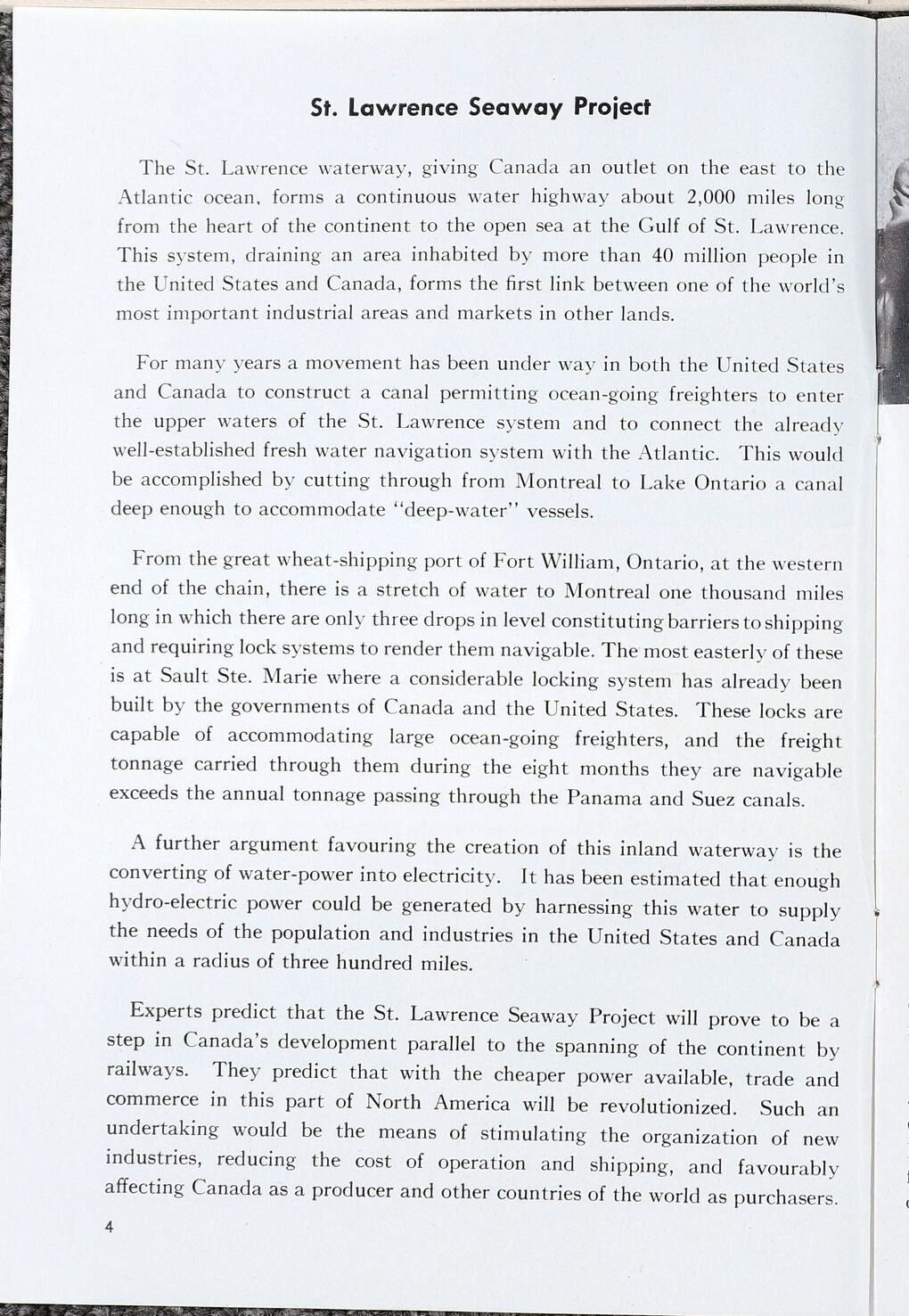
Full resolution (JPEG) - On this page / på denna sida - St. Lawrence Seaway Project

<< prev. page << föreg. sida << >> nästa sida >> next page >>
Below is the raw OCR text
from the above scanned image.
Do you see an error? Proofread the page now!
Här nedan syns maskintolkade texten från faksimilbilden ovan.
Ser du något fel? Korrekturläs sidan nu!
This page has never been proofread. / Denna sida har aldrig korrekturlästs.
St. Lawrence Seaway Project
The St. Lawrence waterway, giving Canada an outlet on the east to the
Atlantic ocean, forms a continuous water highway about 2,000 miles long
from the heart of the continent to the open sea at the Gulf of St. Lawrence.
This system, draining an area inhabited by more than 40 million people in
the Und States and Canada, forms the first link between one of the world’s
most important industrial areas and markets in other lands.
For many years a movement has been under way in both the United States
and Canada to construct a canal permitting ocean-going freighters to enter
the upper waters of the St. Lawrence system and to connect the already
well-established fresh water navigation system with the Atlantic. This would
be accomplished by cutting through from Montreal to Lake Ontario a canal
deep enough to accommodate ‘‘deep-water’’ vessels.
From the great wheat-shipping port of Fort William, Ontario, at the western
end of the chain, there is a stretch of water to Montreal one thousand miles
long in which there are only three drops in level constituting barriers to shipping
and requiring lock systems to render them navigable. The most easterly of these
is at Sault Ste. Marie where a considerable locking system has already been
built by the governments of Canada and the United States. These locks are
capable of accommodating large ocean-going freighters, and the freight
tonnage carried through them during the eight months they are navigable
exceeds the annual tonnage passing through the Panama and Suez canals.
A further argument favouring the creation of this inland waterway is the
converting of water-power into electricity. It has been estimated that enough
hydro-electric power could be generated by harnessing this water to supply
the needs of the population and industries in the United States and Canada
within a radius of three hundred miles.
Experts predict that the St. Lawrence Seaway Project will prove to be a
step in Canada’s development parallel to the spanning of the continent by
railways. They predict that with the cheaper power available, trade and
commerce in this part of North America will be revolutionized. Such an
undertaking would be the means of stimulating the organization of new
industries, reducing the cost of operation and shipping, and favourably
affecting Canada as a producer and other countries of the world as purchasers.
4
@
<< prev. page << föreg. sida << >> nästa sida >> next page >>